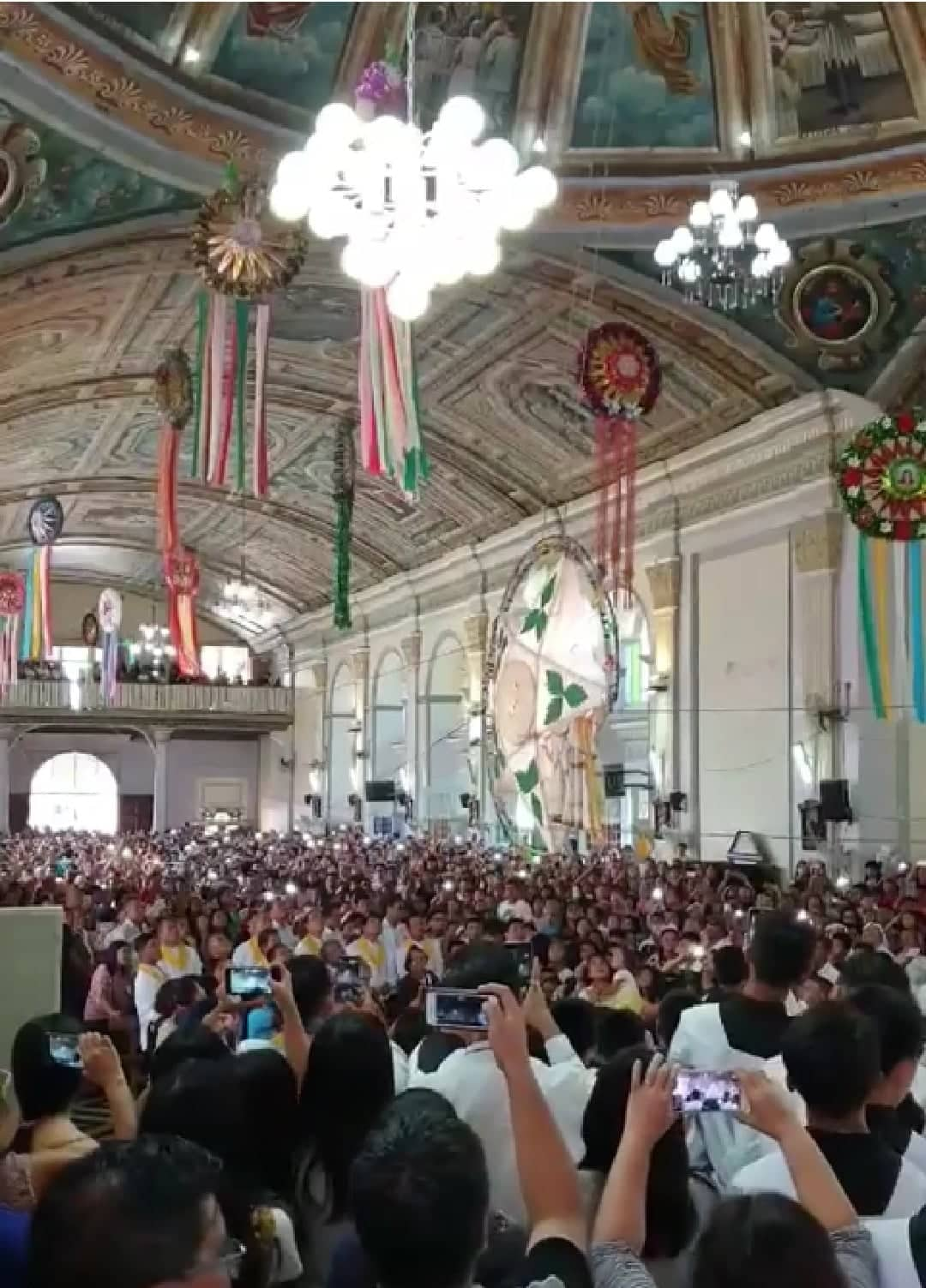Jagna: Bohol town whose history is ‘tied’ to a ‘kometa’

Residents of Jagna town in Bohol province commemorate the “Dagit sa mga Bitoon,” (Snatching of the Stars) on Sunday as the Catholic faithful celebrated the Feast of the Epiphany. The Saint Michael the Archangel Parish in Jagna, Bohol, prides itself as the only town in Bohol that preserves Christmas traditions uninterrupted since 1867. Photo courtesy: Contributed Photo/Municipal Councilor Anthony Aniscal
JAGNA TOWN, Bohol, Philippines — For the parishioners here, the Holy Mass last Sunday was not only meant to celebrate the Feast of the Epiphany or the Three Kings. It was also meant to recall the centuries-old “Dagit sa mga Bitoon,” which literally means “Snatching of the Stars.”
Jagna Municipal Councilor Anthony Aniscal said he and other parishioners in Jagna made it a point to attend the reenactment.
“It is a tradition that every Catholic devotee must preserve since it adds identity to the town,” he added.
The Feast of the Epiphany is a commemoration of the visit of the three Wise Men, or the Three Kings.
Catholics refer to this event as the “Epiphany,” which means a manifestation or revelation. According to Biblical accounts, it was the time the newborn God-King that was shown to the world, represented by the wise men.
Article continues after this advertisement“Dagit sa mga Bitoon,” however, tells of different story – the journey of the big star called “kometa” back home by gliding on a rope.
Article continues after this advertisementAlong the way, the kometa snatched and carried a star, amid the lively march by the Jagna band.
Candies fell while each star was being snatched by the passing “kometa.”
Hundreds of residents heard the Three Kings Mass at 8 a.m. on Sunday at the Saint Michael the Archangel Parish celebrated by Msgr. Ignacio Reyes together with Msgr. Orie Jubac, Fr. Tereso Lumacang, Fr. Agapito Viodor and Fr. Dongdong Estafia.
In his homily, Estafia told the faithful that the Feast of the Epiphany was an important reminder that the journey of faith must continue.
“Like the Three Kings, we must continue to follow the light of Christ as we progress more deeply in our relationship with God,” he said.
Prior to the “Dagit sa mga Bitoon”, residents also kept the tradition of the “Padagan sa Kometa” (Gliding of the Comet) which was held on Christmas Eve.
“Dagit sa mga Bitoon” and “Padagan sa Kometa” are the two traditions that are kept alive in Jagna town.
The “Padagan sa Kometa” is also practiced in Catholic churches in the country because it is included in the Liturgy.
But it is only in Jagna where the “Dagit sa mga Bitoon” (Snatching of the Stars) is done on the first Sunday of January.
“That makes it unique in Jagna because the celebration doesn’t end in “Pagdagan sa Kometa” but we have the ‘Balik-Dagit’,” said Aniscal.
Historical records of celebrating the “Padagan sa Kometa” of the church dates back in 1867 when parishioners were first documented decorating the church with lanterns every Christmas season and taking them down on the Feast of Epiphany.
Jagna old timers say that before the revolution against Spain, people were no longer content with decorating the church with just small stars and a small comet.
Through several Christmases, the stars “grew” to their present uniform shapes, sizes and colors.
Records added that it was never interrupted even during the Japanese occupation.
While the community moved out of the Poblacion to a makeshift church structure in the hills of Sitio Sun-ok in Barangay Tejero, Rev. Fr. Filomeno Lucero and his assistant Rev Fr. Aguedo Cimafranca still managed the “Padagan sa Kometa” and “Dagit sa mga Bitoon” in their evacuation site.
Before the first Simbang Gabi on Dec. 16, the kometa (star) and the other smaller 12 stars were already hung.
The kometa’s tail was folded and it remained in the “coro” until Christmas Eve — ready for its journey to the Belen, which was 62 meters away.
The “kometa” was about 3 meters and its tail was even bigger and longer. The head of the 12 stars was around one and half meters in diameter and the tail was over three meters long.
When the choir Pastorela Chorale sang the “Gloria in Excelsis Deo,” the lights inside the church were dimmed to give emphasis on the “kometa” as it glided on a guide rope towards the altar passing through the 12 stars evenly hanging near the ceiling.
At least 10 men maneuvered the ropes connected to the comet and the stars which attached it to the main line.
With these ropes and pulleys, the operators maneuvered the comet to glide to and fro and up and down until it reached to the Belen placed near the altar.
When the “kometa” approached the nativity scene, it went down thrice to pay homage to the child Jesus. Stretching and displaying its long tail, the “kometa” was then in place high above the Belen, where it would remain until the Feast of the Three Kings. /cbb